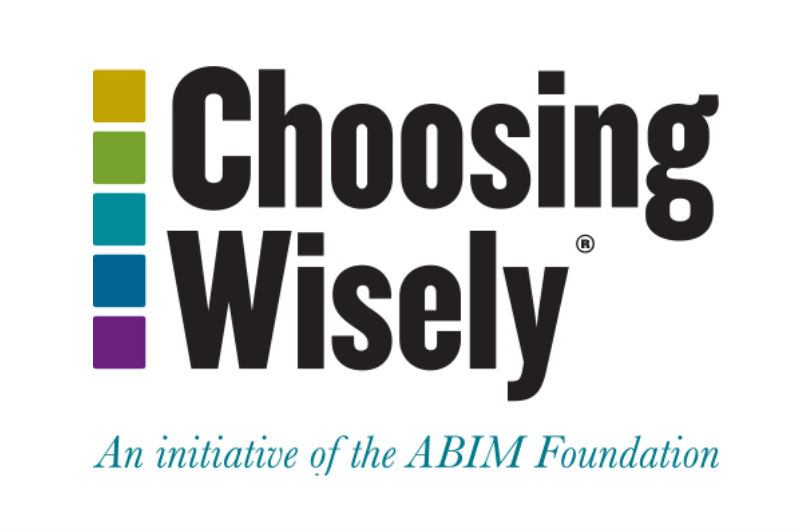Clinician Leads Effort in Wisconsin to Talk More, Test Less
Oct 13, 2016 - News
An article by the ABIM Foundation about one physician's effort to reduce unnecessary stress tests for low-risk patients.
View Full Article at Choosing Wisely USClinician Leads Effort in Wisconsin to Talk More, Test Less
Oct 13, 2016 - News
An article by the ABIM Foundation about one physician's effort to reduce unnecessary stress tests for low-risk patients.
View Full Article at Choosing Wisely US
“When I arrived nine years ago after spending 20 years in private practice, I noticed a difference in the culture of the local medical community. There seemed to be an awful lot of stress testing. It was well-intentioned, but often in people who were unlikely to benefit,” said Patrick Hughes, MD, a cardiologist at UW Health and associate professor of medicine at the University of Wisconsin School of Medicine and Public Health.
Dr. Hughes brought his concerns to UW Health leadership.
“At that time my role was to interpret the exercise EKG portion of a stress test that was done with nuclear imaging. I shared with our chief at a group meeting that it seemed like we were commonly performing exams for patients whose pre-test probability was low—and then I held my breath. To his credit he said, ‘Look, we really need to find out how often this happens.’”
Dr. Hughes helped review his group’s adherence to appropriate-use criteria for stress testing with nuclear imaging at UW Health. He found that roughly one-third of stress tests conducted in the outpatient setting weren’t recommended because the patients were too low-risk to benefit.
Dr. Hughes and his colleagues developed a tool called The Guide to Ordering Stress Tests to help referring physicians recognize when a stress test may not be appropriate for a patient – either because the patient was too low-risk for the test to be helpful or the patient was at such high-risk that a stress test might actually be harmful.
“This introduced me to appropriate-use criteria and made me think about why we were doing this. Along the way we recognized that part of the problem was that many of us were still working within the framework of an outdated view of the pathophysiology of coronary artery disease,” he said. “The Guide to Ordering Stress Tests was very well-received and over time, our use of outpatient stress testing with nuclear imaging in situations where the test would usually not assist management has declined to 6 percent.”
Roughly 5 years ago measurement of adherence to appropriate use criteria became a requirement for ICA-Echo Lab accreditation.
“Our first survey demonstrated that roughly 20 percent of stress echoes in our lab at University of Wisconsin in Madison were done in clinical scenarios for which the test would rarely help our patients,” said Dr. Hughes.
One of the Choosing Wisely recommendations published by the American Society of Echocardiography states, “Avoid using stress echocardiograms on asymptomatic patients who meet ‘low-risk’ scoring criteria for coronary disease.”
In the case of an asymptomatic patient, the “The Guide to Ordering Stress Tests” begins by using the ACC/AHA CV Risk Estimator to calculate the 10-year risk of hard cardiovascular events. Based on that statistic, the tool makes recommendations. For instance, when the 10-year risk of stroke or myocardial infarction in an asymptomatic patient is >10 percent, the guide states, “Intermediate to high probability (>10 percent) = The same treatments used for secondary prevention of CAD may already be indicated. The value of stress testing in this circumstance is considered uncertain. A stress test may be useful if the outcome will change management. If the ECG is normal and the patient can exercise, consider starting with an ECG treadmill test.”
In recognition of his efforts to improve care and reduce unnecessary testing in cardiology, Dr. Hughes was recently recognized as a Choosing Wisely Champion by the American Society of Echocardiography (ASE). Announced earlier this year, the Champions program is an initiative of the ABIM Foundation to recognize clinicians who are leading efforts to reduce overuse and waste in health care. More than a dozen leading medical specialty societies have committed to participate in the program.
The tool Dr. Hughes helped develop is distributed regularly to all providers that refer patients to UW Health for stress testing in the echolab, and accompanied by an introductory letter that provides context of how appropriate-use criteria can help avoid overuse.
“The tool has worked really well. We saw our overuse of stress echocardiograms drop from 20 percent in 2012 to 5 percent in 2015,” he said.
Dr. Hughes says faculty members in the family medicine training program tell him that they’ve posted the tool on their bulletin board and refer to it regularly. He also shares there has been a noticeable decrease in patients who come for stress tests when they would be better served in the ED.
“When you look at the people ordering the tests, they’re really just trying to do what they thought was best. And what they thought was best was in part based on observing what their colleagues were doing. There can be habits of practice that develop in a community that are self-perpetuating,” he said. “It’s been really gratifying to see how much of an impact we’ve been able to make and the fact that clinicians are very receptive to getting help on how to make wise choices.”
This article was prepared by the US Choosing Wisely campaign.
